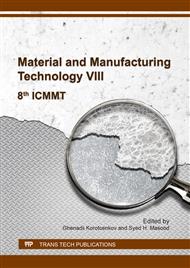p.196
p.201
p.207
p.215
p.221
p.226
p.231
p.238
p.245
The Biocompatibility and Occlusion Ability of a Zein-Based Biomaterial for Bone Surgery
Abstract:
During surgical procedures on bone, a common method of producing haemostasis at bleeding cancellous bone is the occlusion of blood vessels. This is often achieved with bone wax, which is not bioresorbable, unlike the zein-based biomaterial investigated in the present research. Zein is a prolamin derived from corn, and has been gaining importance as a bio-medical material. Taking advantage of its solubility in ethanol-water solvents but insolubility in water, a zein-based viscoelastic solid can be produced which effectively occludes the flow of fluids through a porous surface modelling cancellous bone. Zein powder was dissolved into a 70% ethanol-in-water solution, and the ethanol was later leached out through exposure to an alcohol-free media. The insoluble zein ‘resin’ produced could occlude water flow through a porous surface. Experiments were conducted to determine the optimum composition of the precursor zein solution, varying the proportion of zein dissolved in the ethanol-water solvent. A 0.7 w/v composition was selected as the preferred ratio. A cell viability test using the resazurin assay showed that unleached ethanol in the zein-based biomaterial does not pose a threat, as the metabolic activity of osteoblasts on zein resin outperformed that on bone wax after 24 hours of incubation. Subsequent characterisation of the zein resin was performed with a rheometer: results showed that the 0.7 w/v composition had a higher storage modulus and loss modulus for the range of frequencies tested.
Info:
Periodical:
Pages:
221-225
Citation:
Online since:
October 2017
Authors:
Keywords:
Price:
Сopyright:
© 2017 Trans Tech Publications Ltd. All Rights Reserved
Share:
Citation:


